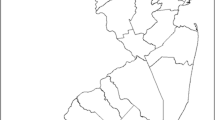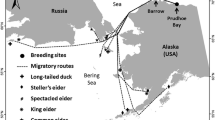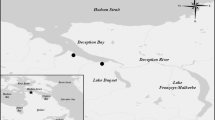Abstract
This study investigated sub-lethal effects and detoxification processes activated in free-ranging Red Knots (RKs) (Calidris canutus) from the Pertuis Charentais on the Atlantic coast of France, and compared the results with previous data obtained on another shorebird species, the Black-tailed Godwit (Limosa limosa). The concentrations of 13 trace elements (Ag, As, Cd, Co, Cr, Cu, Fe, Hg, Mn, Ni, Pb, Se, Zn) were assessed in the liver, kidneys, muscle and feathers. Stable isotope analyses of carbon and nitrogen were carried out to determine whether differences in diet explained variations in elemental uptake. The mRNA expression of relevant genes (cytochrome c oxidase 1, acetyl-CoA carboxylase, Cu/Zn and Mn superoxide dismutase, catalase, metallothionein, malic enzyme), antioxidant enzyme activities (catalase, glutathione peroxidase (GPx), superoxide dismutase), and metallothionein (MT) levels were investigated to shed light on trace element detoxification and toxic effects. Although Red Knots were characterized by elevated As and Se concentrations which were potentially toxic, most elements were usually below toxicity threshold levels. The results strongly suggested a dietary specialization of Red Knots, with individuals feeding on higher trophic status prey experiencing higher As, Hg and Se burdens. Red Knots and Godwits also showed discrepancies in elemental accumulation and detoxification processes. Higher As and Se concentrations in Red Knots enhanced catalase gene expression and enzyme activity, while Godwits had higher Ag, Cu, Fe and Zn levels and showed higher MT production and GPx activity. The results strongly suggest that detoxification pathways are essentially trace element- and species-specific.




Similar content being viewed by others
References
Adams SM, Giesy JP, Tremblay LA, Eason CT (2001) The use of biomarkers in ecological risk assessment: recommendations from the Christchurch conference on biomarkers in ecotoxicology. Biomarkers 6:1–6
Albert CA, Williams TD, Morrissey CA, Lai VWM, Cullen WR, Elliott JE (2008) Dose-dependent uptake, elimination, and toxicity of monosodium methanearsonate in adult zebra finches (Taeniopygia guttata). Environ Toxicol Chem 27:605–611
Anderson MJ, Gorley RN, Clarke KR (2008) PERMANOVA+ for PRIMER: guide to software and statistical methods. PRIMER-E Ltd, Plymouth
Barjaktarovic L, Elliott JE, Scheuhammer AM (2002) Metal and metallothionein concentrations in Scoter (Melanitta spp.) from the Pacific Northwest of Canada, 1989–1994. Arch Environ Contam Toxicol 43:486–491
Baumann Z, Fisher NS (2011) Modeling metal bioaccumulation in a deposit-feeding polychaete from labile sediment fractions and from pore water. Sci Total Environ 409:2607–2615
Berglund ÅMM, Sturve J, Förlin L, Nyholm NEI (2007) Oxidative stress in pied flycatcher (Ficedula hypoleuca) nestlings from metal contaminated environments in northern Sweden. Environ Res 105:330–339
Bertin G, Averbeck D (2006) Cadmium: cellular effects, modifications of biomolecules, modulation of DNA repair and genotoxic consequences (a review). Biochimie 88:1549–1559
Bocher P, Quaintenne G, Robin F, Doumeret A, Delaporte P (2012) Origins and age structure of Red Knot Calidris canutus staging and wintering on the Atlantic coast of France. J Ornithol 153:103–114
Braune BM, Noble DG (2009) Environmental contaminants in Canadian shorebirds. Environ Monit Assess 148:185–204
Brdička AR (1933) Polarographic studies with the dropping mercury method. A new test for proteins in the presence of cobalt salts in ammoniacal solution of ammonium chloride. Collect Czech Chem Commun 7:112–128
Bustamante P, Miramand P (2004) Interspecific and geographical variations of trace element concentrations in Pectinidae from European waters. Chemosphere 57:1355–1362
Bustamante P, Miramand P (2005) Subcellular and body distributions of 17 trace elements in the variegated scallop Chlamys varia from the Charente-Maritime coast (Bay of Biscay, France). Sci Total Environ 337:59–79
Bustamante P, Lahaye V, Durnez C, Churlaud C, Caurant F (2006) Total and organic Hg concentrations in cephalopods from the North Eastern Atlantic waters: influence of geographical origin and feeding ecology. Sci Total Environ 368:585–596
Clarke KR, Gorley RN (2006) PRIMER v6: user manual/tutorial. PRIMER-E Ltd, Plymouth
Dailey RN, Raisbeck MF, Siemion RS, Cornish TE (2008) Liver metal concentrations in Greater Sage-grouse (Centrocercus urophasianus). J Wildl Dis 44:494–498
Deisseroth A, Dounce AL (1970) Catalase: physical and chemical properties, mechanisms of catalysis, and physiological role. Physiol Rev 50:319–375
Delany S, Scott D (2006) Waterbird population estimates, 4th edn. Wetlands International, Wageningen
Eisler RA (1994) A review of arsenic hazards to plants and animals with emphasis on fishery and wildlife resources. In: Nriagu JO (ed) Arsenic in the environment, part II: human health and ecosystem effects. Wiley, New York, pp 185–259
Elliott JE, Scheuhammer AM, Leighton FA, Pearce PA (1992) Heavy metal and metallothionein concentrations in Atlantic Canadian seabirds. Arch Environ Contam Toxicol 22:63–73
Gómez G, Baos R, Gómara B, Jiménez B, Benito V, Montoro R, Hiraldo F, González MJ (2004) Influence of a mine tailing accident near Doñana National Park (Spain) on heavy metals and arsenic accumulation in 14 species of waterfowl (1998 to 2000). Arch Environ Contam Toxicol 47:521–529
Halpern BS, Walbridge S, Selkoe KA, Kappel CV, Micheli F, D’Agrosa C, Bruno JF, Casey KS, Ebert C, Fox HE, Fujita R, Heinemann D, Lenihan HS, Madin EMP, Perry MT, Selig ER, Spalding M, Steneck R, Watson R (2008) A global map of human impact on marine ecosystems. Science 319:948–952
Hoffman DJ (2002) Role of selenium toxicity and oxidative stress in aquatic birds. Aquat Toxicol 57:11–26
Hoffman DJ, Heinz GH, Sileo L, Audet DJ, Campbell JK, LeCaptain LJ, Obrecht HH III (2000) Developmental toxicity of lead-contaminated sediment in Canada geese (Branta Canadensis). J Toxicol Environ Health A 59:235–252
Hughes MR, Smits JE, Elliott JE, Bennett DC (2000) Morphological and pathological effects of cadmium ingestion on Pekin ducks exposed to saline. J Toxicol Environ Health A 61:591–608
Ikemoto T, Kunito T, Tanaka H, Baba N, Miyazaki N, Tanabe S (2004) Detoxification mechanism of heavy metals in marine mammals and seabirds: interaction of selenium with mercury, silver, copper, zinc, and cadmium in liver. Arch Environ Contam Toxicol 47:402–413
Jardine TD, Kidd KA, Fisk AT (2006) Applications, considerations, and sources of uncertainty when using stable isotope analysis in ecotoxicology. Environ Sci Technol 40:7501–7511
Kägi JH (1991) Overview of metallothionein. Methods Enzymol 205:613–626
Koeman JH, Peeters VHM, Koudstaal-Hol CHM, Tijoe PS, De Goeu JJM (1973) Mercury selenium correlation in marine mammals. Nature 246:385–386
Kojadinovic J, Cosson RP, Le Corre M, Bustamante P (2007) Trace elements in three marine birds breeding on Reunion Island (Western Indian Ocean). Part 1: factors influencing their bioaccumulation. Arch Environ Contam Toxicol 52:418–430
Koopman K (2002) Mass, moult, migration and subspecific status of red knots Calidris canutus on the Frisian Wadden Sea coast, the Netherlands. Wader Study Gr Bull 97:30–35
Kunito T, Kubota R, Fujihara J, Agusa T, Tanabe S (2008) Arsenic in marine mammals, seabirds, and sea turtles. Rev Environ Contam Toxicol 195:31–69
Lewis SA, Furness RW (1991) Mercury accumulation and excretion by laboratory reared black-headed gull (Larus ridibundus) chicks. Arch Environ Contam Toxicol 21:316–320
Lucia M, André JM, Gonzalez P, Baudrimont M, Gontier K, Maury-Brachet R, Davail S (2009) Impact of cadmium on aquatic bird Cairina moschata. Biometals 22:843–853
Lucia M, André JM, Gontier K, Diot N, Veiga J, Davail S (2010) Trace elements concentrations (mercury, cadmium, copper, zinc, lead, aluminium, nickel, arsenic, and selenium) in some aquatic birds of the Southwest Atlantic coast of France. Arch Environ Contam Toxicol 58:844–853
Lucia M, Bocher P, Cosson RP, Churlaud C, Robin F, Bustamante P (2012) Insight on trace element detoxification in the Black-tailed Godwit (Limosa limosa) through genetic, enzymatic and metallothionein analyses. Sci Total Environ 423:73–83
Mahéo R (2011) Limicoles séjournant en France (Littoral), 34ème contribution française aux dénombrements internationaux des oiseaux d’eau organisés par Wetlands International. Office national de la chasse et de la faune Sauvage, France
Martoja R, Berry JP (1980) Identification of tiemannite as a probable product of demethylation of mercury by selenium in cetaceans. A complement to the scheme of the biological cycle of mercury. Vie Milieu 30:7–10
Mateo R, Beyer WN, Spann JW, Hoffman DJ, Ramis A (2003) Relationships between oxidative stress, pathology and behavioral signs of lead poisoning in mallards. J Toxicol Environ Health A 66:1371–1389
Michener RH, Kaufman L (2007) Stable isotope ratios as tracers in marine food webs: an update. In: Michener RH, Lajtha K (eds) Stable isotopes in ecology and environmental science. Blackwell, Oxford, pp 238–282
Nebel S, Piersma T, van Gils JA, Dekinga A, Spaans B (2000) Length of stopover, fuel storage and sex-bias in the occurrence of red knots Calidris c. canutus and C. c. islandica in the Wadden Sea during southward migration. Ardea 88:165–176
Neff JM (1997) Ecotoxicology of arsenic in the marine environment. Environ Toxicol Chem 16:917–927
Nigro M, Leonzio C (1996) Intracellular storage of mercury and selenium in different marine vertebrates. Mar Ecol Prog Ser 135:137–143
Outridge PM, Scheuhammer AM, Fox GA, Braune BM, White LM, Gregorich LJ (1999) An assessment of the potential hazards of environmental selenium for Canadian wildlife. Environ Rev 7:81–96
Paglia DE, Valentine WN (1967) Studies on the quantitative and qualitative characterization of erythrocyte glutathione peroxidase. J Lab Clin Med 70:158–169
Peterson SA, Ralston NVC, Peck DV, Van Sickle J, Robertson JD, Spate VL, Morris JS (2009) How might selenium moderate the toxic effects of mercury in stream fish of the Western U.S.? Environ Sci Technol 43:3919–3925
Piersma T, Hoekstra R, Dekinga A, Koolhaas A, Wolf P, Battley P, Wiersma P (1993) Scale and intensity of intertidal habitat use by knots Calidris canutus in the Western Wadden Sea in relation to food, friends and foes. Neth J Sea Res 31:331–357
Piersma T, Van Aelst R, Kurk K, Berkhoudt H, Maas LRM (1998) A new pressure sensory mechanism for prey detection in birds: The use of principles of seabed dynamics? Proc R Soc B 265:1377–1383
Pigeot J, Miramand P, Guyot T, Sauriau PG, Fichet D, Le Moine O, Huet V (2006) Cadmium pathways in an exploited intertidal ecosystem with chronic cadmium inputs (Marennes-Oléron, Atlantic coast, France). Mar Ecol Prog Ser 307:101–114
Quaintenne G, van Gils JA, Bocher P, Dekinga A, Piersma T (2010) Diet selection in a molluscivore shorebird across Western Europe: Does it show short- or long-term intake rate-maximization? J Anim Ecol 79:53–62
Rubenstein DR, Hobson KA (2004) From birds to butterflies: animal movement patterns and stable isotopes. Trends Ecol Evol 19:256–263
Scheuhammer AM (1987) The chronic toxicity of aluminium, cadmium, mercury, and lead in birds: a review. Environ Pollut 46:263–295
Skorupa JP, Morman SP, Sefchick-Edwards JS (1996) Guidelines for interpreting selenium exposure of biota associated with nonmarine aquatic habitats. U.S. Fish and Wildlife Service, National Irrigation Water Quality Program, Sacramento
Smith P, Khron R, Hermanson G, Mallia A, Gartner F, Provanzano M, Fujimoto E, Goeke N, Olson B, Klenk D (1985) Measurement of protein using bicinchoninic acid. Anal Biochem 150:76–85
Spaans B, Van Kooten L, Cremer J, Leyrer J, Piersma T (2011) Densities of individually marked migrants away from the marking site to estimate population sizes: a test with three wader populations. Bird Study 58:130–140
Spallholz JE, Hoffman DJ (2002) Selenium toxicity: cause and effects in aquatic birds. Aquat Toxicol 57:27–37
Stewart MS, Spallholz JE, Neldner KH, Pence BC (1999) Selenium compounds have disparate abilities to impose oxidative stress and induce apoptosis. Free Radic Biol Med 26:42–48
Stohs SJ, Bagchi D (1995) Oxidative mechanisms in the toxicity of metal ions. Free Radic Biol Med 18:321–336
Stroud DA, Baker A, Blanco DE, Davidson NC, Delany S, Ganter B, Gill R, González P, Haanstra L, Morrison RIG, Piersma T, Scott DA, Thorup O, West R, Wilson J, Zöckler C (2006) The conservation and population status of the world’s waders at the turn of the millennium. In: Boere GC, Galbraith CA, Stroud DA (eds) Waterbirds around the world. The Stationery Office, Edinburgh, pp 643–648
Thompson JAJ, Cosson RP (1984) An improved electrochemical method for the quantification of metallothionein in marine organism. Mar Environ Res 11:137–152
van Gils JA, de Rooij SR, van Belle J, van der Meer J, Dekinga A, Piersma T, Drent R (2005) Digestive bottleneck affects foraging decisions in red knots Calidris canutus. I. Prey choice. J Anim Ecol 74:105–119
van Gils JA, Piersma T, Dekinga A, Spaans B, Kraan C (2006) Shellfish dredging pushes a flexible avian top predator out of a marine protected area. PLoS Biol 4:2399–2404
Vitousek PM, Mooney HA, Lubchenco J, Melillo JM (1997) Human domination of earth’s ecosystems. Science 277:494–499
Wang Y, Fang J, Leonard SS, Krishna Rao KM (2004) Cadmium inhibits the electron transfer chain and induces reactive oxygen species. Free Radic Biol Med 36:1434–1443
Wooliams JA, Wiener G, Anderson PH, McMurray CH (1983) Variation in the activities of glutathione peroxidase and superoxide dismutase and in the concentration of copper in the blood in various breed crosses of sheep. Res Vet Sci 34:253–256
Acknowledgments
The authors wish to thank the University of La Rochelle for its financial support through a post-doctoral grant to ML, as well as the Natural Reserves of the Pertuis Charentais (Moëze-Oléron, Marais d’Yves, Lilleau des Niges) for their technical assistance during bird catches. We especially thank P. Delaporte, P. Rousseau, J. Gautier and J. Gonin from the Moëze-Oléron Natural Reserve. We also thank P. Richard and G. Guillou (UMR LIENSs) for technical support during stable isotope analysis. This work was supported financially by the CPER (Contrat de Projet Etat-Région) and the CNRS.
Author information
Authors and Affiliations
Corresponding author
Electronic supplementary material
Below is the link to the electronic supplementary material.
Rights and permissions
About this article
Cite this article
Lucia, M., Bocher, P., Cosson, R.P. et al. Evidence of species-specific detoxification processes for trace elements in shorebirds. Ecotoxicology 21, 2349–2362 (2012). https://doi.org/10.1007/s10646-012-0991-3
Accepted:
Published:
Issue Date:
DOI: https://doi.org/10.1007/s10646-012-0991-3




